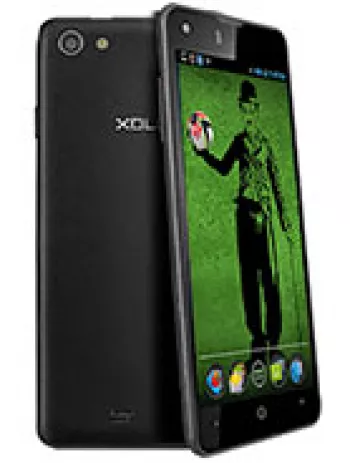
Overview of XOLO Q600
The XOLO Q600 was introduced in July 2013 as a budget-friendly smartphone targeting users looking for basic smartphone functionalities at an affordable price. Despite its discontinuation, the Q600 remains a notable example of early Android devices catering to entry-level segments.
Design and Build
The device features a compact form factor with dimensions of 133.5 x 67 x 11.9 mm, making it convenient for one-handed use. Weighing 147.7 grams, the XOLO Q600 strikes a balance between substance and portability. The phone supports a dual-SIM configuration with Mini-SIM slots, which was a popular feature in emerging markets during its release.
Display
The XOLO Q600 comes with a 4.5-inch TFT display. The screen offers a resolution of 480 x 854 pixels with a 16:9 aspect ratio, yielding a pixel density of approximately 218 ppi. While the display may not provide the vibrancy of higher-end devices, it suffices for basic tasks like messaging, browsing, and multimedia consumption.
Performance
Under the hood, the XOLO Q600 is powered by a Mediatek MT6589 chipset manufactured on a 28 nm process. It features a quad-core 1.2 GHz Cortex-A7 CPU and a PowerVR SGX544 GPU, supporting moderate multitasking abilities. Though the 512MB RAM and 4GB internal storage may seem minimal by today's standards, they were typical for budget devices in 2013, accommodating essential applications and media.
Operating System and UI
The phone runs on Android 4.2 Jelly Bean, an iteration that brought several improvements over its predecessors, including better UI responsiveness and added customization features. Despite the version's limitations compared to newer Android iterations, it provided a stable and relatively smooth user experience for its time.
Camera Capabilities
The XOLO Q600 features a 5MP rear camera equipped with autofocus and supported by an LED flash. It also offers additional features like HDR and panorama mode, allowing users to experiment with basic photographic effects. The camera can record video at 720p at 30fps, delivering standard quality for classic video recording needs. The front VGA camera serves for basic video calls and selfies, reflecting the early adoption of front-facing cameras.
Battery Life
The phone houses a removable Li-Ion 2000 mAh battery. According to manufacturer specifications, the battery can last up to 333 hours in standby mode on a 2G network or up to 242 hours on a 3G network. Talk time extends up to 13 hours and 30 minutes on 2G and 10 hours on 3G, providing adequate power for daily tasks without frequent charging.
Connectivity and Communication
Connectivity options include Wi-Fi 802.11 b/g/n with hotspot capability, Bluetooth 3.0, GPS, and FM radio. The absence of NFC keeps the device in line with its budget positioning. The device supports HSPA networks with navigation through GSM 900/1800 for 2G and HSDPA 2100 for 3G, offering sufficient speed for regular internet use.
Additional Features
The XOLO Q600 includes essential sensors like an accelerometer and compass, enhancing basic utility functions such as screen orientation adjustments and navigational aids. The phone supports a microUSB 2.0 interface for charging and data transfer, maintaining compatibility with a wide range of peripherals available during its time.
Market and Availability
Upon its release, the XOLO Q600 was marketed as an affordable smartphone option, priced at approximately 120 EUR. Available initially in a white color, it appealed to consumers seeking cost-effective devices with dual-SIM functionality. Its discontinuation reflects the rapid evolution of smartphone technology, with more advanced offerings superseding earlier models.
Conclusion
The XOLO Q600 encapsulates the characteristics of entry-level smartphones from the early 2010s, combining basic computing power, multimedia capabilities, and essential connectivity. While it may not hold up against the sophistication of current smartphones, it served as a stepping stone for many users transitioning from feature phones to smart devices. Its legacy lies in its accessibility and simplicity, emphasizing functionality at a low cost.
Main Features of XOLO Q600
- Dual SIM capability for convenience.
- Quad-core 1.2 GHz Cortex-A7 processor for smooth performance.
- Android 4.2 (Jelly Bean) operating system.
- Expandable storage with a microSDHC card slot.
- 5 MP main camera with LED flash, HDR, and panorama features.
- 4.5-inch display with a decent 480 x 854 pixel resolution.
- Support for Wi-Fi 802.11 b/g/n and hotspot functionality.
- GPS for navigation and location services.
- FM radio support.
- Removable 2000 mAh battery with reasonable standby and talk time.
- Lightweight design at 147.7 g.
Disadvantages of XOLO Q600
- Discontinued model, making it difficult to find new units or receive official support.
- Low internal storage capacity of 4GB, which is insufficient for modern applications and media.
- Limited RAM of 512MB may result in sluggish performance and difficulty running multiple applications simultaneously.
- TFT display with low resolution (480 x 854 pixels) may not offer the best visual quality compared to modern standards.
- Outdated operating system (Android 4.2 Jelly Bean) which may not support new apps and lacks security updates.
- VGA front camera provides low-quality selfies compared to contemporary smartphones.
- Bluetooth 3.0 is outdated and slower compared to later versions like Bluetooth 4.0 and 5.0.
- Lack of NFC capability, limiting potential for mobile payment applications and quick data transfers.

View Also
More Phones
All Rights Reserved +14268 Phones © Mobilawy 2025

























